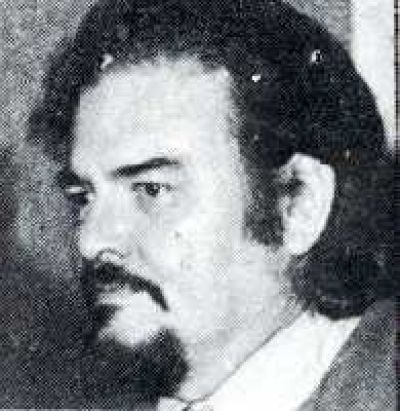Not To Be Lightly Thrown Aside: Randall Garrett’s The Queen Bee

19 Aug, 2019
0 comments
(Not every piece I do for tor fits their needs. Here’s an example.)
Per Theodore Sturgeon, ninety percent of everything is crud (that is, everything published). Most of this crud is of the unmemorable variety, it occupies the brain for a few moments before being forgotten. Some is educationally bad; you might not like the story, but at least understanding why it did not work is illuminating. A very very small fraction is so egregiously wretched that it inspires mockery and disparagement decades after publication, even if out of print. One memorable example: Randall Garrett’s 1958 short story “The The Queen Bee.”
Many of you are mercifully unaware of this story. Let me fix that for you:
some stories are not just worse than you imagine, they are worse than you can imagine
Following a deep-space mishap, a handful of castaways struggle to fulfill their legal obligation to establish the human race on that world. Duty to THE RACE mandates that considerations such as
-
whether it makes sense to try to establish a human colony in that place and time, and
-
whether the women castaways consent to become baby factories
must be disregarded.
(The law is called Bryson’s law. Don’t ask who Bryson was. The story requires such a law, so it exists.)
In “The Queen Bee,” Elissa Krand is decidedly uncooperative. She will not be persuaded to be a baby factory. Another woman has been persuaded by beatings, but that doesn’t work for Elissa. However, simple self-interest does the trick. She realizes that she could be the the queen bee of the unintended colony if she were the only woman on the planet. To that end, she murders the two other surviving women.
The flaw in her plan is soon apparent. The men of the colony must preserve the sole remaining fertile woman on the planet. However, they only need her body. Her mind is surplus to needs. So one of the men, a doctor, lobotomizes Elissa. Project planet population goes forward.
Would anyone be surprised to learn that this story was accepted for publication by the same editor who gave us the dead girl in “The Cold Equations”?
Now you, being savvy in SF history, may be thinking that Johanna Russ’ We Who Are About To… was a response to “The Queen Bee.” Probably not; a previous discussion on this site suggests that this book may have been intended as a reply to Marion Zimmer Bradley’s thematically related Darkover Landing. Russ’ novel does make a cogent point about one of the justifications for rape/forced pregnancy programs, which is that regardless of what happens on some backwater world, birthrate-wise, the RACE as a whole will do just fine.
The story I strongly suspect was intended as a direct response to the Garrett was Poul Anderson’s 1960 Eve Times Four. Four human women (Kamela, Hedwig, Teresina, and Marie), one human male crewman (Third Officer Newhouse), and two aliens (Arsang and Fred), land on what they are told is a desert planet. Once the lifeboat touches down, Newhouse reminds his companions of regulation 298376, Statutes of the United Commonwealth AKA the Reproductive Act. Reproduce they must.
One of the aliens immediately points out that the regulation makes no sense as applied to aliens. The women decline to be drafted (by way of firearms, martial arts, and prolonged discourses on philosophy) and also decline to murder each other. Teresina points out that they are not trapped without a functioning stardrive on an uninhabited world as Newhouse claimed; they have landed in an as-yet-untouched region of a low-population human colony world. The capper: regulation 298376, Statutes of the United Commonwealth AKA the Reproductive Act does not make any sense because is a complete fiction. It was invented by Newhouse, who also orchestrated the sequence of events that led to him being marooned with four women. It’s all an elaborate excuse for rape.
It’s too bad that the Anderson story manages to be better than the Garrett story without being all that compelling in itself.
Still, “The Queen Bee” provides a go-to example of a certain sort of horrifically misogynist story, which is why despite having been out of print from 1958 until 2017 (when it was included in Gordon Van Gelder’s Go Forth and Multiply), people have been discussing it in various tones of disgust and alarm for over sixty years. Don’t believe me? Drop ‘The Queen Bee randall garrett’ into your preferred search engine and see what turns up.
Notoriety is a form of immortality, I suppose. Although perhaps not one that should be sought out.
1: Another, equally important difference, is that rather being edited by Astounding’s monstrous John W. Campbell, Jr., Anderson sold his story to Fantastic, then enjoying something of a golden age under editor Cele Goldsmith. While editor, she published the debut fiction of, if memory serves, Thomas M. Disch, Sonya Dorman, Keith Laumer, Roger Zelazny, and Ursula K. Le Guin. Editors matter.
